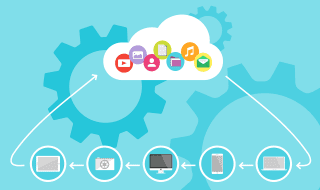
In today’s business landscape, data is everything. It helps organizations make informed decisions, understand their customers, and create better products and experiences. But with so much data out there, it can be challenging to know where to start. That’s where a customer data platform (CDP) comes in. A customer data platform is a centralized system that collects customer data from multiple sources and gives organizations a single view of their customers. Keep reading to learn more about a CDP.
What is a customer data platform?
A customer data platform (CDP) is a marketing technology that collects and unifies customer data from various sources to give businesses a single view of their customers. This allows companies to create more personalized marketing campaigns and better understand what each customer wants.
The CDP collects data from a business’s website, email marketing software, social media accounts, CRM system, and other sources. It then cleans and blends the data to be used for marketing purposes. The CDP can also track customer behavior so businesses can see what campaigns are working and which ones need improvement. A CDP typically includes three core components:
- A central database or repository that stores all customer data, both structured and unstructured.
- The ability to access and analyze all customer data in real-time.
- The ability to share customer data with other systems within the organization, such as CRM, marketing automation, e-commerce platforms, etc.
How do I get started with a customer data platform?
CDPs are used by companies in various industries and can improve the effectiveness of marketing campaigns. This enables marketers to target customers with more relevant messages based on insights from understanding customers’ complete profiles.
To get started with a CDP, you first need to identify your customer data sources. These may include internal systems such as your CRM or website analytics tools and external sources such as social media platforms or third-party data providers.
Once you have identified all of your data sources, you will need to map them to the appropriate fields in your CDP. This process will involve identifying which fields are common to all of your data sources and which fields vary from source to source. You can then use this information to create records for each customer, including all relevant information about that customer regardless of where it was collected.
Once your customer data has been loaded into the CDP, you can begin using it to create targeted marketing campaigns. The CDP will provide tools for segmenting your customers based on demographics, purchase history, engagement level, and more. You can then use these segments to deliver customized messages via email, social media, or other channels.
How do you choose the right customer data platform for your business?

When it comes to customer data platforms, there is no one-size-fits-all solution. The right CDP for your business will depend on various factors, including the size and complexity of your customer data set, marketing goals, and technical capabilities. But in general, there are some key things to look for when choosing a CDP.
Make sure the platform can handle the volume and complexity of your customer data. Not all CDPs are created equal; some are better suited for smaller businesses with more specific data sets, while others can handle larger enterprises with more complex data. A good CDP should also offer comprehensive tools for creating and managing customer profiles and segments. This will allow you to target customers with relevant messages based on their specific needs and interests. You also want to ensure that the CDP integrates well with your current IT infrastructure and other marketing technologies you’re using already.
A CDP enables businesses to collect and manage customer data in one place. This allows companies to understand their customers and their needs better. In addition, a CDP can help enterprises target customers with relevant content and ads. This is a valuable tool for businesses to improve customer engagement and grow their business.




